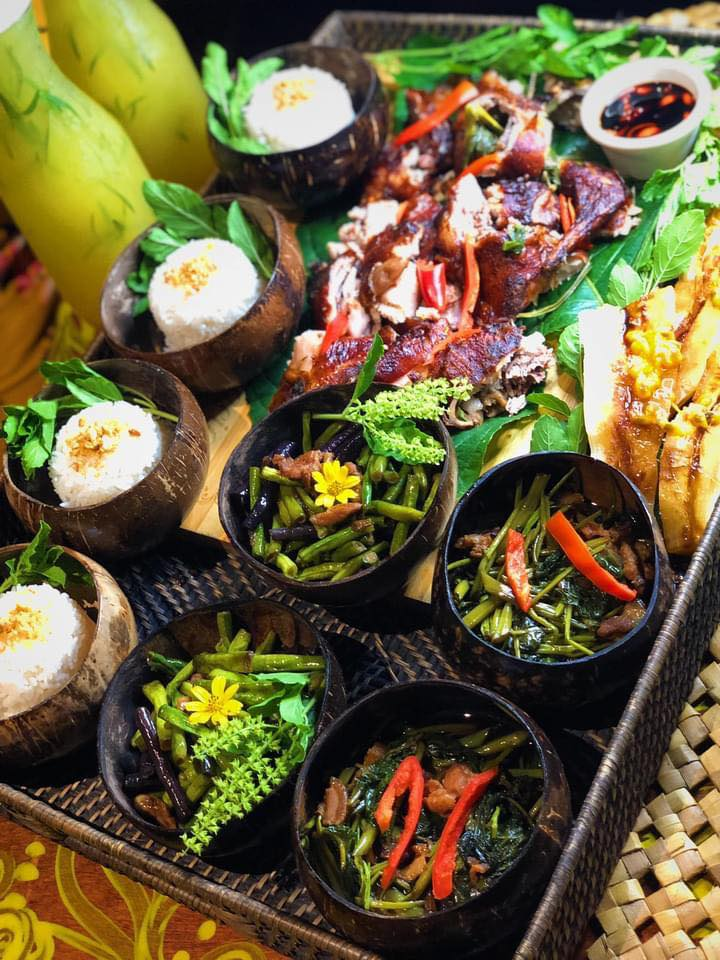Filipinos’ love for food is immense, especially so during festivals and special celebrations. However, do you know how many calories the foods that we consume contain?

Well, we are here to tell you how many calories are in usual Filipino dishes!
Adobo

A staple Filipino dish which is particularly known for its tangy and savory taste, which is especially famous in Luzon areas. This dish is currently considered as the country’s national dish.
Adobo is commonly made from chicken or pork meat. Generally, a serving of an adobo is around 85 to 113 grams. However, the calorie count per serving differs depending on the type of meat used for the dish. Chicken adobo is usually around 250 – 300 calories, while pork adobo is usually at a higher count which is around 300 – 350 calories.
Lechon Baboy

A dish that the Cebuano people pride themselves in. This dish is commonly found in celebrations, and is famously known for its crispy skin and savory well-cooked meat. However, be careful since this food has sent many people to hospitals already.

Lechon is generally made from suckling pigs to take advantage of its tender meat which the dish is also known for. On average, a serving of it which is around 100 grams has a calorie count of 242 calories.
Lumpia

Along with Lechon, Lumpia has also found itself in the domain of the staple party foods of Filipino celebrations. This dish has recently become the number one target of Filipino party-goers. Currently, Lumpia has many variations and along its numerous varieties comes the different calorie count for every variant.

Lumpia apparently has 3 variations which are lumpiang shanghai, lumpiang sariwa and lumpiang togue. Lumpiang shanghai which is generally the smallest version of lumpia and have a filling made out of pork is usually around 54 calories per 1 roll, lumpiang sariwa which is commonly made from raw or half-cooked vegetables on the other hand plays around at 90 calories per roll, while lumpiang togue which is generally just like lumpia shanghai but have sautéed bean sprouts as its filling has 101 calories per roll.
Sinigang

A well-loved Filipino dish especially during rainy days is famously known for its savory sour broth. The dish is best consumed while it is hot to fully savor the taste of its ingredients.
Just like any other Filipino food, sinigang has many variations, but the commonly known variant is the pork and seafood sinigang. Pork Sinigang is generally made from pork meat along with local Filipino vegetables like sitaw, okra, kangkong etc. The dish usually offers 457 calories per bowl (702g).
Beef Kare-Kare

This dish apparently has had its origins from the Kari dish Moro people of South Philippines. The dish apparently got its inspiration from Thai fish curry. The Kapampangans were the one who further evolved the dish to the Kare-Kare that we know today by adding local flavors to it.
Kare-Kare is generally made from oxtail added with local vegetables and spices like the banana heart, and what’s more interesting is that peanut butter has been added to the dish to give it a Filipino touch. Currently, the dish contains 523 calories per serving.
Sizzling Pork Sisig

When there’s inuman, there’s sizzling pork sisig. This dish currently found its way to the heart of inuman celebrations of the Filipino people. The food apparently serves as an accompaniment for alcoholic drinks during inumans.
Sizzling Pork Sisig is commonly made of mixed parts of a pig such as minced pork meat, ears and face. The dish also has chicken liver in it to add more flavors to the food. A serving of sisig which is 182 grams contains 515 calories.
Leche Flan

One of the most famous Filipino desserts which is usually eaten during Christmas celebrations or served as an ingredient of the Philippines’ famous halo-halo.
Leche Flan is generally just made out of egg yolks, evaporated and sweetened condensed milk, and topped with caramelized sugar to further sweeten the dish. The dessert has a calorie count of 364 calories per 100g grams.
Pancit Canton

Pancit Canton is also one of the dishes that is served in Filipino parties especially during birthdays and wedding receptions. The dish apparently symbolizes a long and happy life. However, pancit is also sometimes served on dinner tables.
The traditional pancit canton is usually made out of noodles made from dried eggs, pork belly or tenderloin, chicken broth and some local and imported vegetables and spices. Pancit canton actually contains 334 calories per serving.
Arroz Caldo

While pork sisig is an inuman accompaniment, arroz caldo is the complete opposite. This dish is commonly used to treat people with hangovers after an all-out drinking party with your friends.
Arroz caldo is a Filipino rice porridge dish that is the combination of rice, chicken, fish sauce and local Filipino ingredients. The dish is best consumed hot. Despite its simple ingredients, the dish actually contains 684 calories per bowl (2 cups or 549 grams).
Bulalo

A savory broth dish that is especially best consumed when hot. Along with arroz caldo, bulalo is also a relief dish for a hangover after an inuman.
Traditionally, bulalo is commonly made from beef shank added with corn cobs, bok choy and other local ingredients. However, despite the amount of ingredients the dish has it only contains 158 calories per cup serving which is around 245 grams.

— Food truly is a bliss no matter the occasion. However, let us remember that it is important to know the nutritional value of the food that we consume to maintain a healthy body and mind. Stay healthy fellow, Sugboanons!

